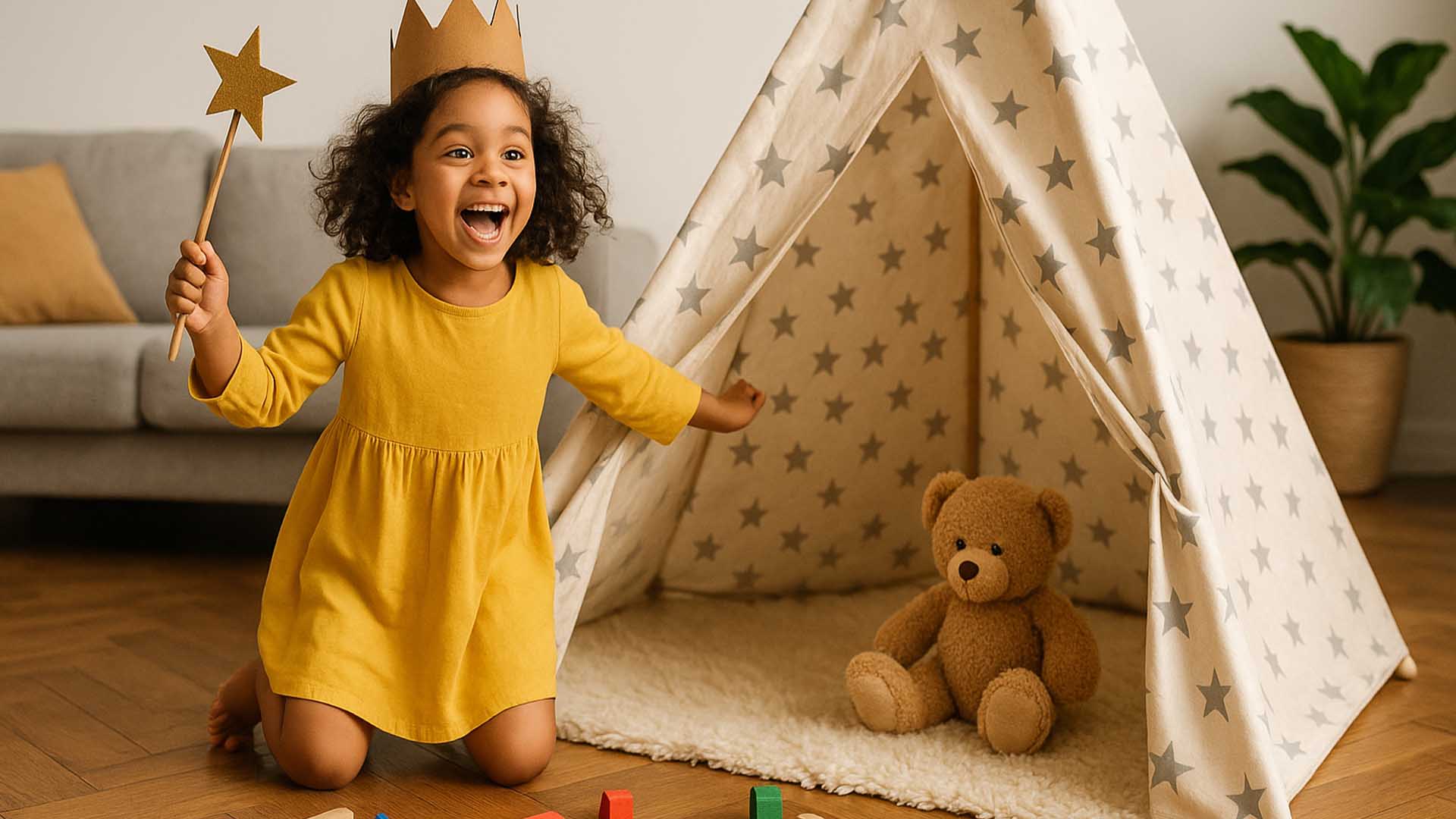Creativity and imagination are superpowers that every child possesses. They are not just about drawing or painting; they are about thinking differently, solving problems, and exploring new ideas. Nurturing these qualities in children helps them develop critical thinking skills, emotional intelligence, and a lifelong love for learning. This article will delve into the importance of fostering creativity and imagination in kids and provide practical tips for parents to encourage these vital skills in their daily lives.
The Magic of Imaginative Play
Why Imaginative Play Matters
Imaginative play, also known as pretend play, is more than just fun; it’s a cornerstone of healthy child development. When children engage in imaginative play, they are actively experimenting with social roles, practicing language skills, and developing problem-solving abilities. They learn to negotiate, share, and understand different perspectives. It’s a safe space for them to explore emotions and make sense of the world around them [1].
Boosting Cognitive and Emotional Growth
Through imaginative play, children enhance their cognitive flexibility, allowing them to adapt to new situations and think creatively. It also significantly contributes to their emotional growth by providing an outlet for expressing feelings and understanding complex social interactions. For example, pretending to be a doctor helps a child process their experiences at a clinic, while playing house allows them to explore family dynamics [2].
Practical Ways to Spark Creativity
Provide Open-Ended Materials
One of the best ways to encourage creativity is to provide children with open-ended materials that can be used in multiple ways. Instead of toys with a single purpose, offer items like building blocks, art supplies (crayons, paper, playdough), dress-up clothes, and natural materials like sticks and stones. These materials invite children to use their imagination to create and transform [3].
Encourage Storytelling and Role-Playing
Storytelling is a powerful tool for fostering imagination. Encourage your child to tell stories, whether it’s about their day, a dream, or a made-up adventure. You can also engage in role-playing games together, taking on different characters and scenarios. This helps them develop narrative skills, expand their vocabulary, and think creatively about different situations [4].
Embrace Mess and Experimentation
Creativity often involves making a mess and experimenting. Provide a safe space for your child to explore and try new things without fear of judgment or failure. This could be a designated art area, an outdoor space for messy play, or simply allowing them to experiment with ingredients in the kitchen. The process of creation is often more important than the final product [5].
Q&A: Creativity and Imagination for Kids
Q1: How can I encourage my child to be more imaginative if they prefer structured play?
A1: Start by gently introducing elements of imaginative play into their structured activities. For example, if they love building with blocks, suggest they build a castle for a dragon or a house for a tiny doll. You can also model imaginative play yourself, showing them how to transform everyday objects into something new. Over time, they may become more comfortable with less structured play [6].
Q2: Are there specific toys that are better for fostering creativity?
A2: Toys that are open-ended and allow for multiple uses are generally best for fostering creativity. Examples include LEGOs, Magna-Tiles, plain wooden blocks, art supplies, and dress-up clothes. These toys don’t dictate how they should be played with, leaving room for a child’s imagination to take the lead [7].
Q3: How can I balance screen time with creative play?
A3: It’s important to create a balance between screen time and creative play. Set limits on screen time and ensure there’s plenty of time for unstructured, imaginative play. Encourage children to use screens for creative purposes, such as making digital art or coding simple games, rather than just passive consumption. Model creative activities yourself and make them a regular part of your family routine [8].
Sources
- Miracle Recreation – The Importance of Imagination in Child Development
- Therapy Focus – The benefits of imaginative play
- Bright Horizons – Nurturing Creativity & Imagination for Child Development
- Celebree – 7 Ways to Nurture Your Child’s Creativity and Imagination
- Community Playthings – Environmental Education (Note: This source was used for general ideas on fostering exploration and hands-on learning, which are related to creativity.)
- Begin Learning – Kids’ Imagination Boost [8 Activities to Do for Creativity]
- Discovery Building Sets – 6 Benefits Of Imaginative Play | Why It Is So Important!
- Child Mind Institute – The Power of Pretend Play for Children
SEO Metadata
Keywords:
AI Summary: This article explores the importance of fostering creativity and imagination in children, highlighting the benefits of imaginative play for cognitive and emotional growth. It provides practical tips for parents, including offering open-ended materials, encouraging storytelling, and embracing experimentation to unleash their child’s creative potential.
Q&A for Header:
- How can I encourage my child to be more imaginative if they prefer structured play?
- Are there specific toys that are better for fostering creativity?
- How can I balance screen time with creative play?








0 Comments